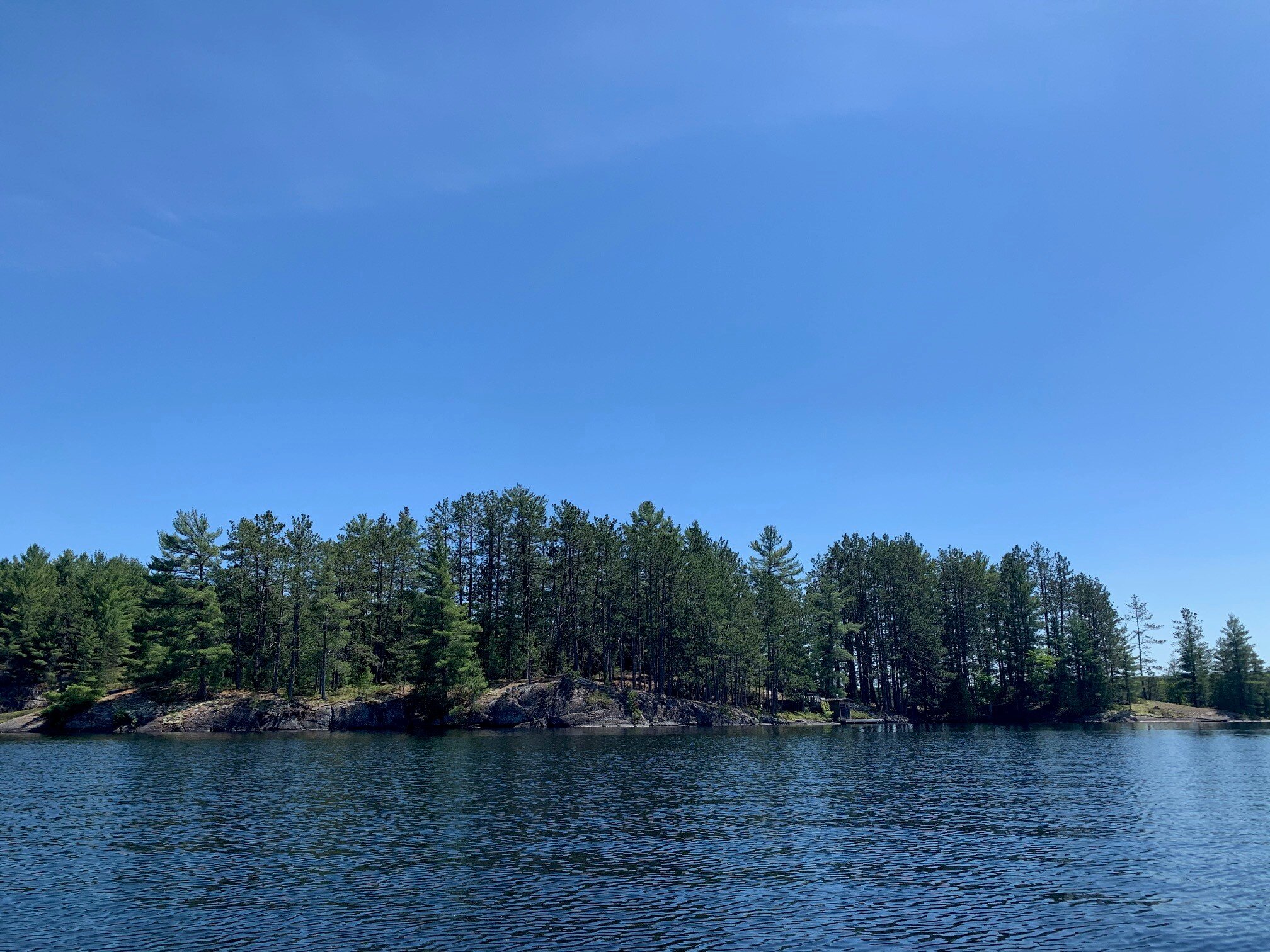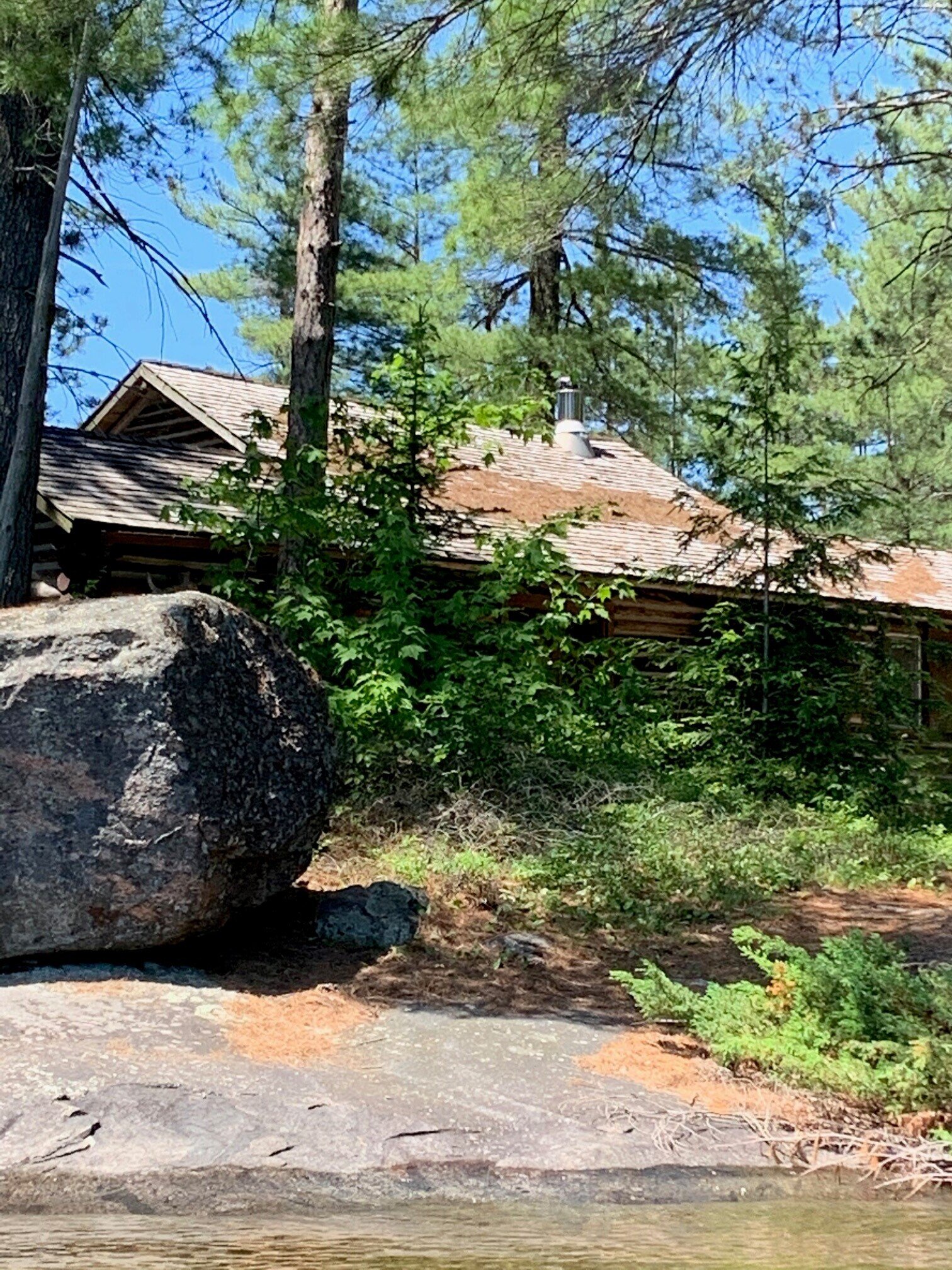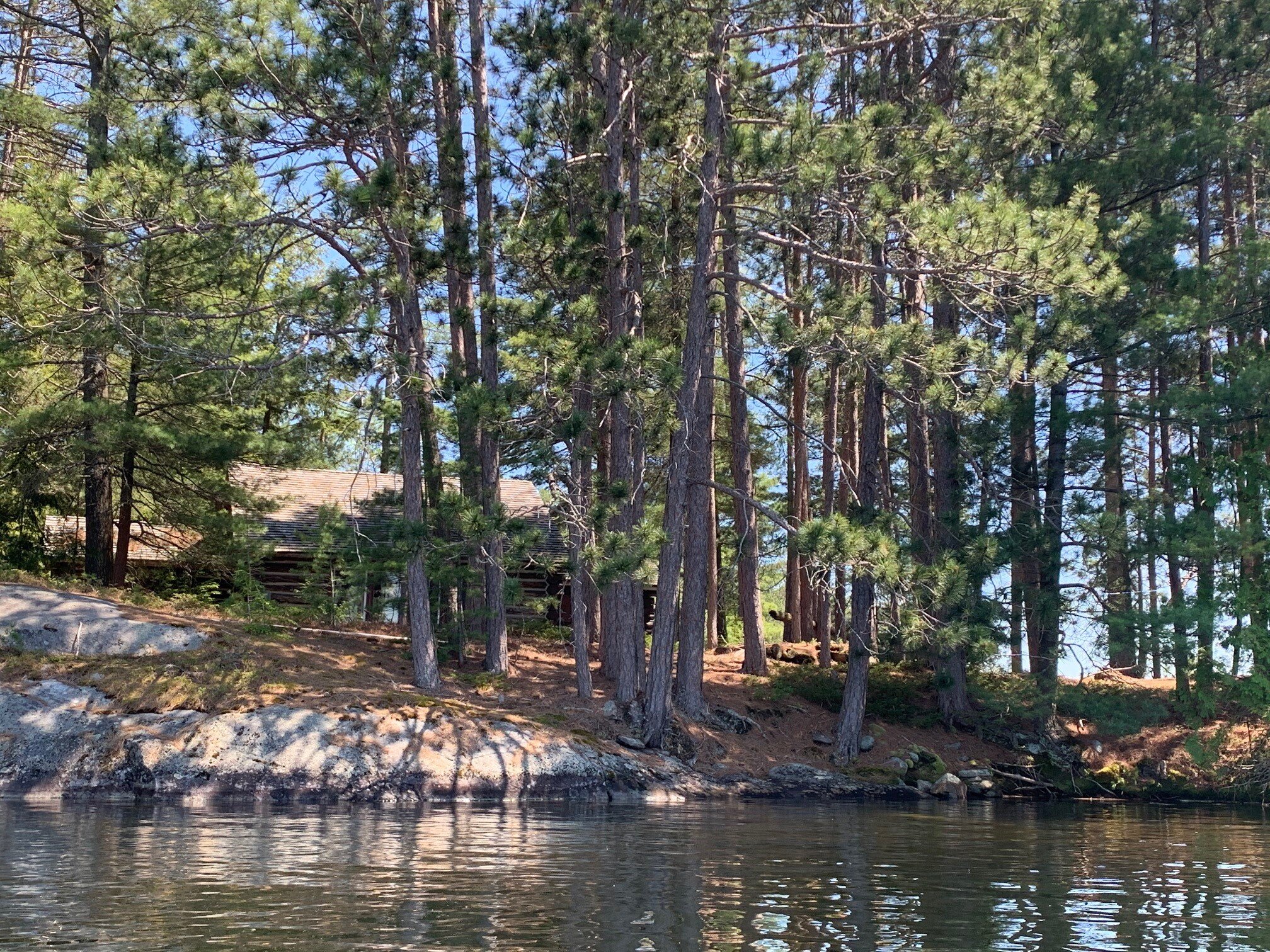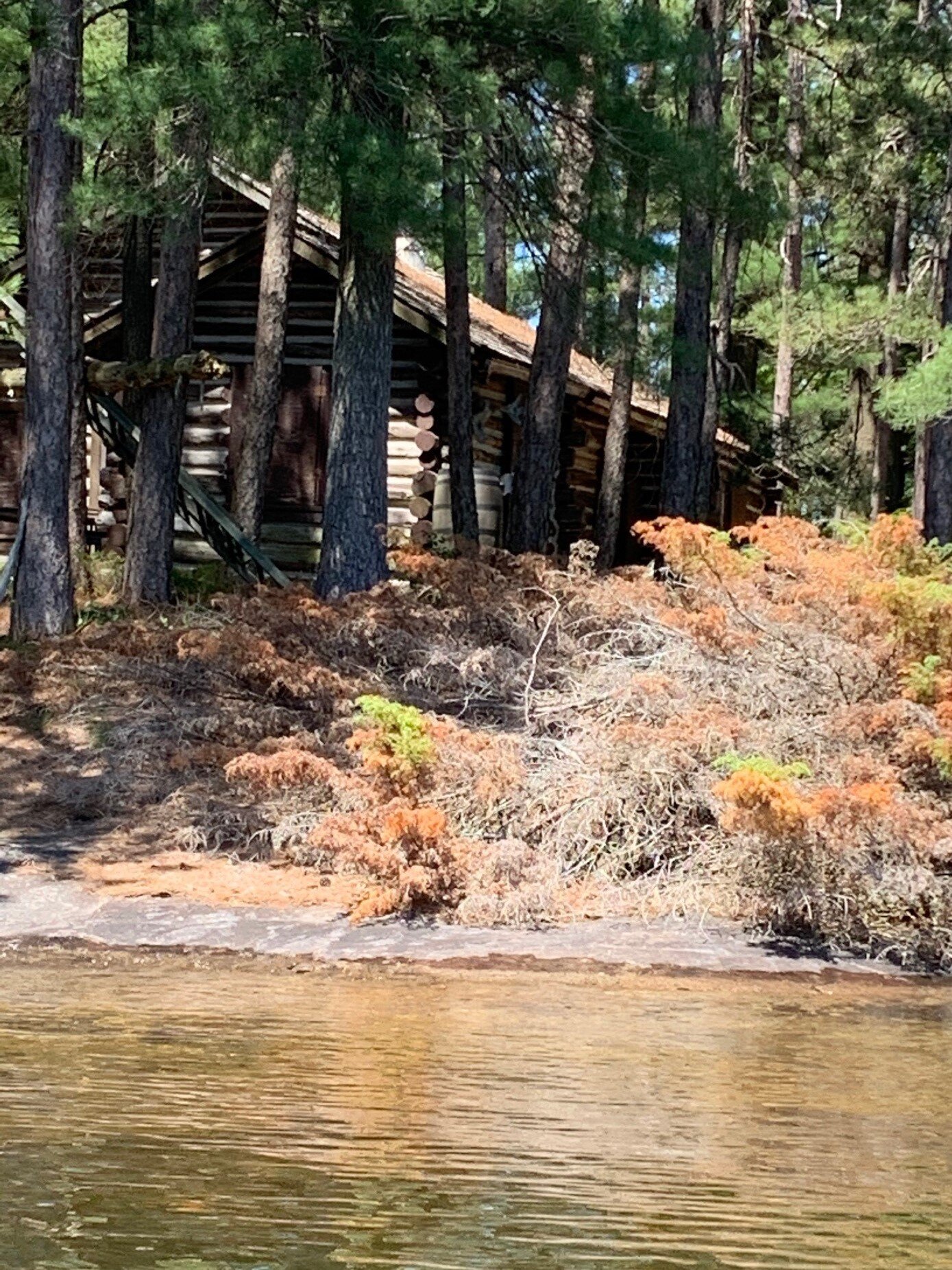Halls Island Artist Residency is an exciting initiative which provides artists of many disciplines with a peaceful, private, island retreat in the Haliburton Highlands, Ontario.
Land Acknowledgment
We respectfully acknowledge that the Halls Island Artist Residency is situated in the Treaty 20 Michi Saagiig territory and in the traditional territory of the Michi Saagiig and Chippewa Nations, collectively known as the Williams Treaties First Nations, which include: Curve Lake, Hiawatha, Alderville, Scugog Island, Rama, Beausoleil, and Georgina Island First Nations and also within the traditional, unceded territories of the Algonquin Nation. This area now known to us as the Haliburton Highlands, has always been called, "Gidaaki", by the Anishinaabe.
We respectfully acknowledge that the Williams Treaties First Nations and the Algonquin Nation are the stewards and caretakers of these lands and waters in perpetuity, and that they continue to maintain this responsibility to ensure their health and integrity for generations to come. We also recognize the contributions of Métis, Inuit, and other Indigenous peoples have made, both in shaping and strengthening our province and country as a whole.
The intent and spirit of the treaties that form the legal basis of Canada bind us to share the land “for as long as the sun shines, the grass grows and the rivers flow.”
This recognition of the contributions and historic importance of Indigenous peoples must also be clearly and overtly connected to our collective commitment to make the promise and the challenge of Truth and Reconciliation real in our communities, and in particular to bring justice for murdered and missing indigenous women and girls across our country.
About Halls Island Artist Residency
Halls Island is located on beautiful Koshlong Lake. The boat launch is about a fifteen minute drive from Haliburton Village. The island is a short boat ride or twenty minute paddle from the landing. The island possesses three small cabins; a main cabin with a basic kitchen, dining and living area, and two small sleeper cabins, as well as a nordic-style sauna. Halls Island is without plumbing, using a composting toilet, and relies on solar panels for its minimal power.
Heather O’Connor, one of our 2019 Artist Residents, created this video which captures the essence of Halls Island. Find Heather’s website at heathermoconnor.com
Writers, musicians, visual artists, and artists of other disciplines will find inspiration as they engage with nature and pursue their creative endeavors in this idyllic setting. This off-grid, water access location is ideal for quiet reflection and immersion in the natural world.
Halls Island is privately owned by a family whose generosity is providing the residency, accommodations and island access for the chosen artists. Halls Island Artist Residency is a member of the Haliburton County Community Cooperative, a not-for-profit organization that encourages, develops and supports several community groups in the Highlands.
There is no accommodation cost to resident artists other than food and personal supplies. Transportation to and from the island will be provided by the Halls Island group while transportation to the docking area will be the responsibility of the chosen artists. Those applying should be comfortable staying alone or with their own small group of compatible artists in this rustic setting.
Artists of all disciplines are encouraged to apply, taking note that off-grid cabin accommodations will not support large scale electronic needs. Interest is being sought from artists in Haliburton County and beyond.
Anna’s Workspace: Where Anna’s Poetry Happened Photo submitted by Anna Swanson and April White.
Thanks to Gwenne Becker, previous owner of Halls Island, for sharing this history.
My husband, John, and I purchased Halls Island from Mrs. Halls in 1992. It was in a neglected state with
an absentee owner. It was being used by a relatives who did little or no maintenance.
We were told the main building was constructed about 1950 with local logs, some from the island itself.
We were told also that some Koshlong residents remember helping out as teenagers to put on the cedar
shake roof.
In the beginning, we used kerosene lamps, carried water from the Lake, and used an old outhouse.
There was an old dock on the south side of the island. One thing that John appreciated was a fully
equipped tool shed, which he added to over the years with a chain saw, etc. There was a full supply of
dishes, bedding, etc., some had obviously been expensive, e.g., Limoges tableware.
The larger sleeping cabin, which we called the “Big Bunkie”, was in a bad state. There were animal nests
above the stained tile ceiling and the roof was in bad repair. The other one, the “Small Bunkie”, was in
better shape but still needed care.
One of the first things we did was to contact Grey Anderson, a log-building expert in Norland, for advice
on the health of the main-cabin logs. He advised us not to change the exterior of the building as it was
and is a classic shape. His assessment of the logs was that if we did not repair problems, the main-cabin
logs would deteriorate further. There was rot and the caulking was incomplete and not well applied. So
we hired him for the necessary repairs. Two workers tended to the logs for a month after which we felt
confident that they would last a long time to come.
In addition we hired Grey’s workers to repair the bunkies. The inside of the Big Bunkie was removed to
the bare walls, insulation applied and pine panelling and floors installed. The roof was replaced and new
windows added. I was always proud of how beautiful it looked. The inside of the small Bunkie was in
pretty good shape as was the roof and so we made some minor repairs and replaced the windows.
The decisions our family made were all guided by maintaining the rustic quality of the island and so we
rejected the idea of bringing in hydro because it would involve cutting down a wide swath of trees on
the mainland lot that was part of the property. So John installed a solar power system with the panels
placed to face the sun. He was an engineer and so was comfortable digging trenches to hold the wires
and wiring all 3 buildings. We used the power for lighting and reading. We had no urge for TV or any
appliances that used a lot of power. I always preferred to listen to the wind, the water, and the birds.
We hired people to build a new dock on the west side of the island and to build a sauna on it. We had a
wood stove retrieved from a previous sauna we owned and found a company that sold kits. John and
some family members assembled it in a short time. We had many joyful times swimming in the lake
after sauna and sitting on the dock to cool afterwards.
The next project was to build a composting toilet. We investigated building one inside the cottage and
when we decided it was not possible, hired a company to build one outside.
I am grateful that the trust maintains the Island in its natural state and shares its delights with artists.
Halls Island Residency thrives on the contribution of unique and diverse artists. We encourage and welcome applications from artists of any discipline and we will consider all qualified individuals regardless of:
· Age
· Ancestry, colour, race
· Ethnic origin
· Place of origin
· Creed, Religion
· Disability
· Family status
· Marital status
· Gender, gender identity, gender expression
· Sexual orientation
We value equality, diversity and inclusion, both in our artists and our volunteers. We are committed to promoting and maintaining trust and confidence.
The dignity of all individuals is important to us. We will not tolerate or condone any form of discrimination, harassment and/or other inappropriate behaviour, and we will not ignore any allegations of such acts brought to our attention.
The Halls Island Artist Residency is part of the Haliburton County Community Cooperative.









